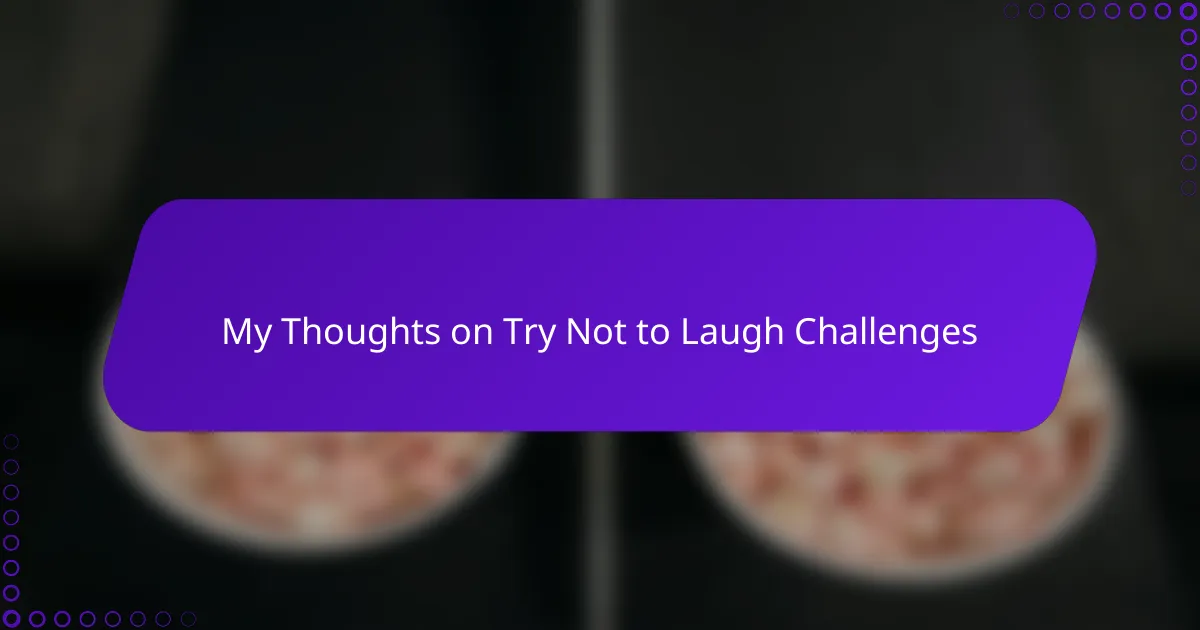Key takeaways
- Try Not to Laugh challenges engage participants in a humorous test of self-control, enhancing enjoyment through shared experiences and laughter tension.
- Popular formats include skits, pranks, reaction videos, and compilations, each contributing to a dynamic and addictive viewing experience.
- Strategies for success include controlling breathing, diverting attention, and mentally preparing for punchlines to maintain composure.
- Hosting challenges benefits from clear rules, diverse clip selection, and a relaxed atmosphere to foster enjoyment over competitiveness.
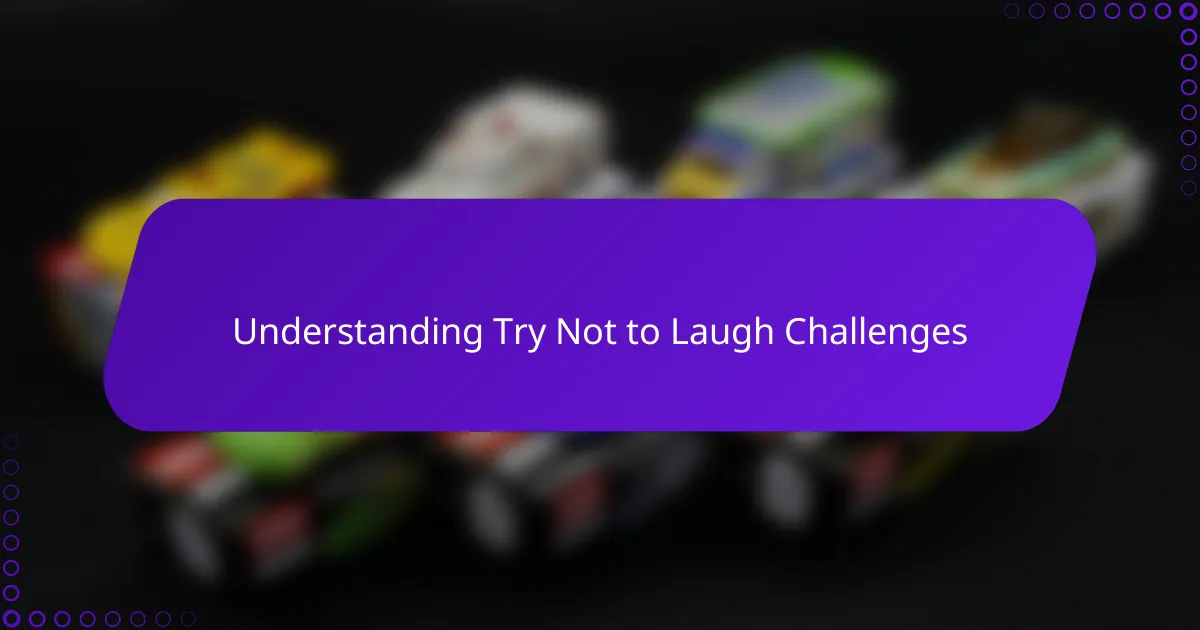
Understanding Try Not to Laugh Challenges
Try Not to Laugh challenges are exactly what they sound like: people watch funny videos or listen to jokes and try their hardest not to burst out laughing. I remember the first time I tried one—it was surprisingly tough! Have you ever found yourself smiling just before a laugh sneaks out? That’s the challenge in action.
What fascinates me is how these challenges tap into something so natural yet so difficult to control—our laughter reflex. It’s almost like an internal battle where every amusing clip tests your willpower. Don’t you think that makes the whole experience even more entertaining? I’ve noticed that the tension of holding back laughter often makes the moments even funnier.
From my perspective, understanding these challenges goes beyond just watching funny content. It’s about appreciating the psychology behind humor and self-control. When I think about it this way, it adds a layer of excitement that keeps me coming back for more. Have you ever caught yourself trying not to smile, only to laugh even harder afterward? That’s the magic of these challenges.
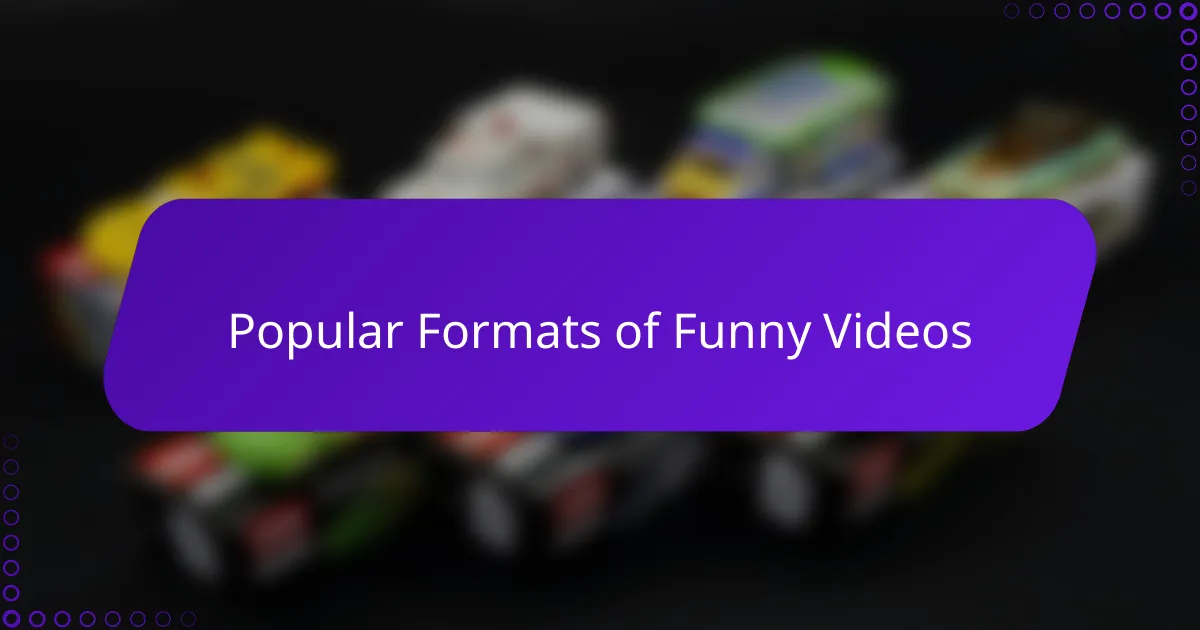
Popular Formats of Funny Videos
Funny videos come in so many shapes, don’t they? I’ve noticed that skits, pranks, and reaction clips often top the charts. Skits usually tell a quick, silly story that catches me off guard, while pranks bring that surprised laughter that’s hard to resist.
Reaction videos have a special place for me, especially when someone tries a Try Not to Laugh challenge. Watching them struggle, squirm, or barely hold back their chuckles is honestly just as entertaining as the original funny clips. Have you ever felt like the person laughing is even funnier than what they’re watching? That’s exactly the vibe I’m talking about.
Then there are compilations—those delightful mashups of the internet’s best fails and hilarious moments. I find they’re like a rollercoaster of laughter, switching quickly from one surprising moment to the next. It’s almost impossible not to get caught up in the fun. Don’t you agree that these formats make the whole experience addictive?
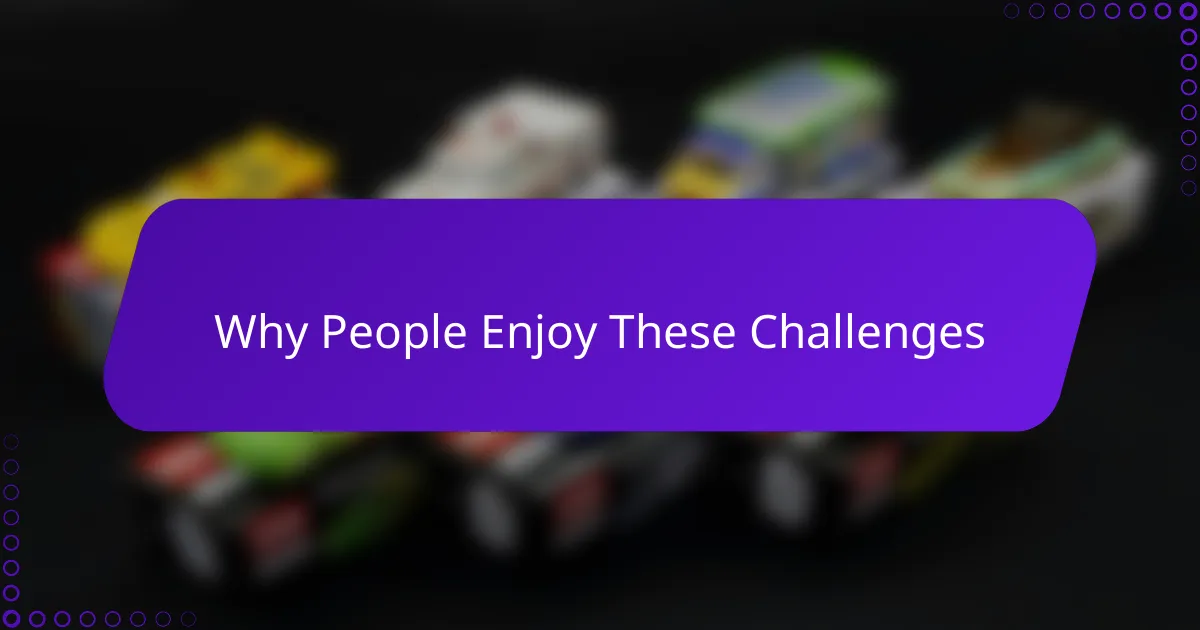
Why People Enjoy These Challenges
There’s something about the thrill of trying not to laugh that keeps me hooked. It’s like a playful test of self-control, where each funny moment becomes a little victory if I manage to hold back. Have you noticed how the struggle itself makes everything feel more intense and hilarious?
I think people also enjoy these challenges because they create a shared experience. Whether you’re watching alone or with friends, there’s an unspoken connection in resisting that burst of laughter. It’s almost like we’re all in on a secret battle against our own funny bones.
What really stands out to me is that these challenges offer a break from everyday stress. Laughing—or even just trying not to—releases tension and lifts the mood. When I’m caught up in one, it feels like a mini escape, reminding me how refreshing and joyful laughter can be.
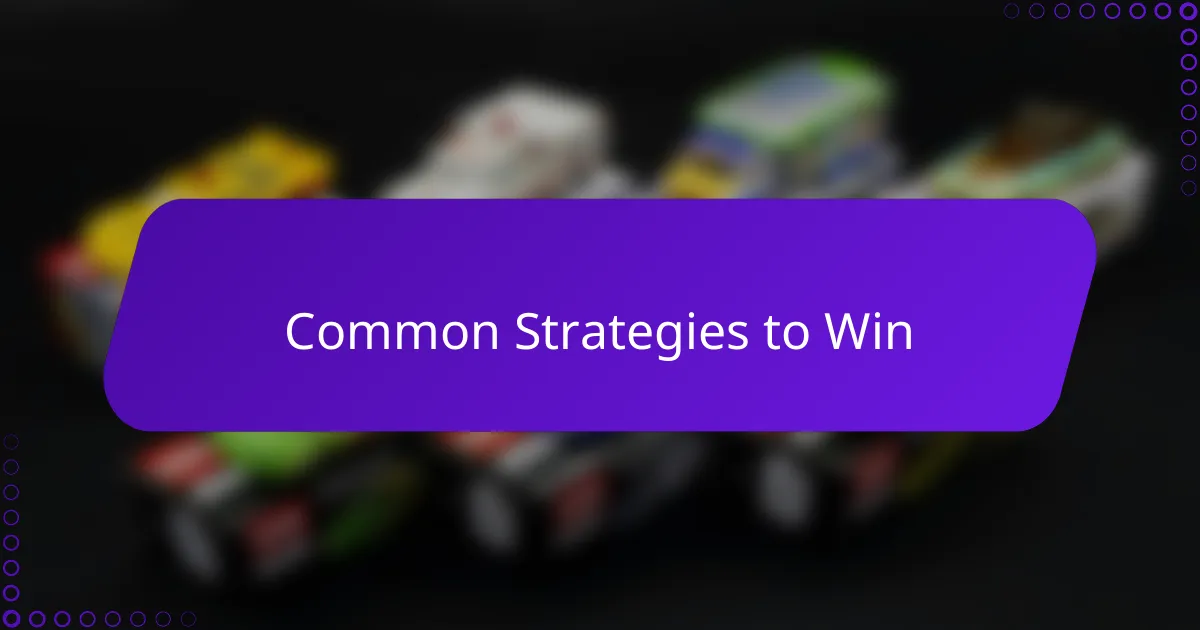
Common Strategies to Win
One strategy I’ve found useful is to focus on controlling my breathing. When I take slow, deep breaths, it helps ease that bubbling urge to laugh. Have you ever noticed how your laughter tends to explode when you’re hyperventilating or gasping for air? Slowing down that rhythm gives me a better chance to keep a straight face.
Another trick I sometimes use is to look away just for a second or fix my gaze on something neutral. It sounds simple, but diverting my attention helps break the funny spell. I’ve caught myself doing this unconsciously, especially during moments when the joke or video gets too ridiculous to handle.
Then there’s the mental game of preparing yourself for the punchline without reacting immediately. I try to anticipate the humor but brace myself not to react too soon. It’s like building up tension but holding the laughter hostage. Don’t you think that suspense actually makes it way more challenging—and fun?
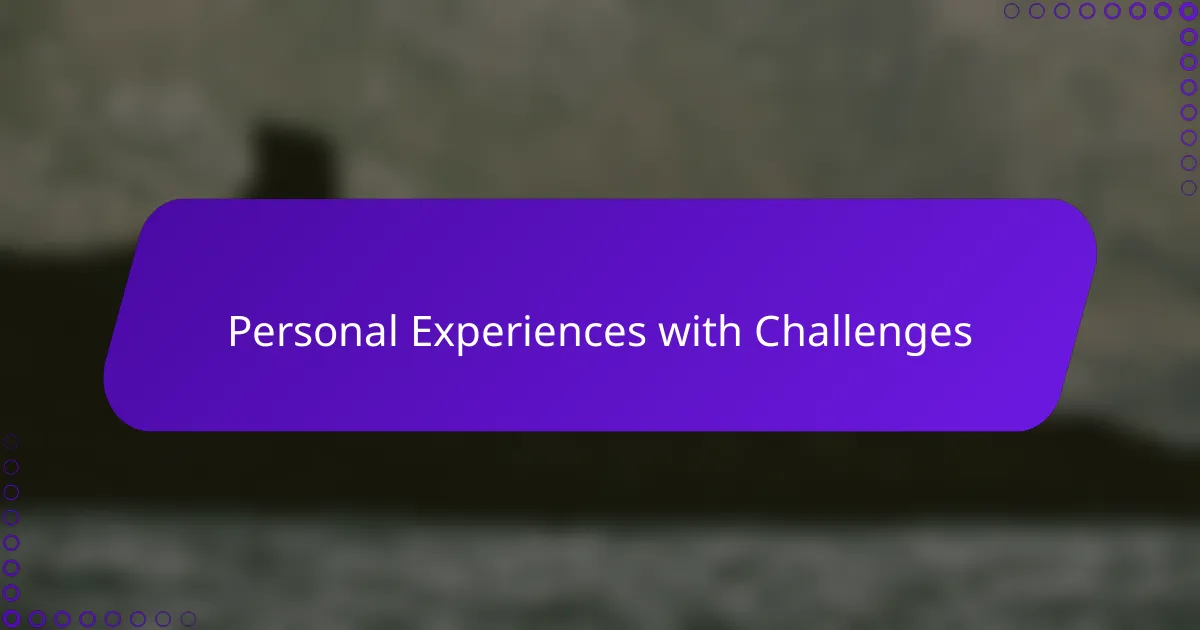
Personal Experiences with Challenges
I remember one time during a family gathering, someone dared me to join a Try Not to Laugh challenge. As the videos played, I was desperately trying to keep a straight face, but my cousin’s contagious giggles made it nearly impossible. Has there ever been a moment when someone else’s laughter just makes you lose control too? That shared struggle made the whole experience even more memorable for me.
Sometimes, I find myself mentally preparing before each clip, bracing for the worst yet secretly hoping I’ll crack first. The tension builds up so much that when I finally do laugh, it feels like a release, almost like a mini celebration. Have you noticed how holding back laughter can make the eventual burst even more satisfying? That rollercoaster of holding in and letting go is what keeps me coming back.
But it’s not always about winning for me. Sometimes, I just enjoy the process of trying and failing spectacularly. Those moments when I can’t help but laugh really highlight how contagious and joyful humor can be. Don’t you think that embracing the fun of failing makes these challenges less about control and more about connection? I definitely do.
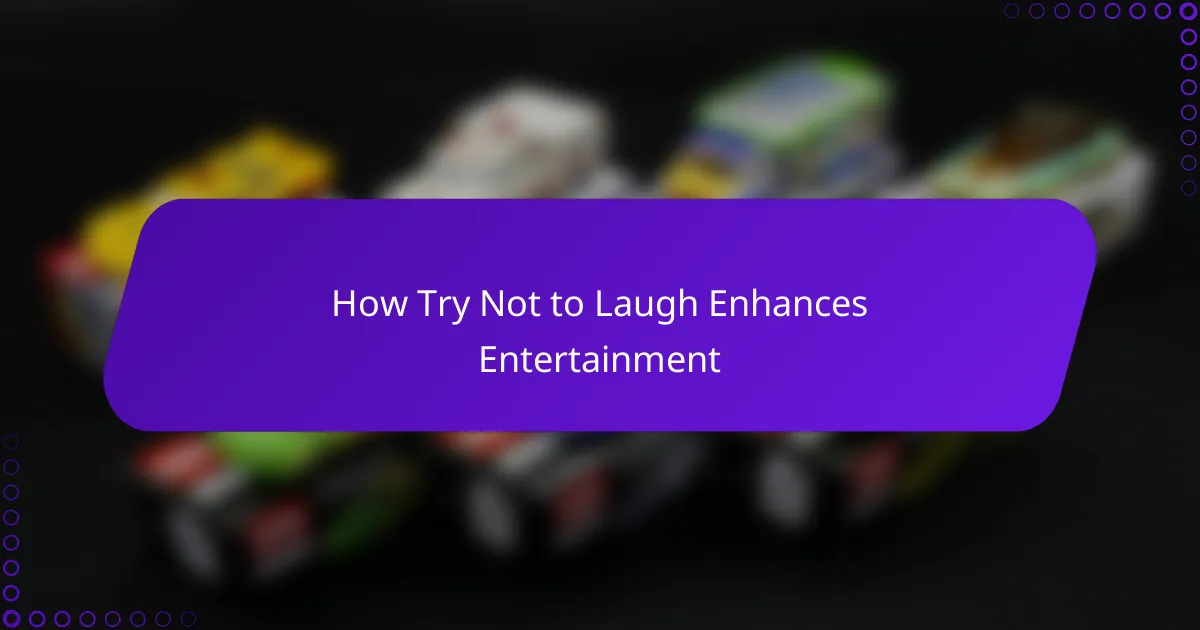
How Try Not to Laugh Enhances Entertainment
Try Not to Laugh challenges add a thrilling twist to entertainment by turning passive watching into active participation. From my experience, trying to suppress laughter makes every joke or funny clip hit harder because I’m so aware of the stakes—will I crack or hold out? Have you ever noticed how this suspense actually doubles the fun?
What’s really interesting is how the challenge heightens our focus on humor, making even small, subtle moments hilarious. When I watch these videos, that tightrope walk between control and laughter turns simple fun into a dynamic game, which keeps me glued to the screen. Doesn’t it feel like your brain is playing a playful prank on you, pushing you toward laughter?
I’ve also found that sharing these challenges with friends or family amps up the entertainment value. The contagious nature of laughter during these games creates a kind of shared excitement that’s hard to beat. Have you ever laughed even harder because someone next to you finally lost it first? Those moments make the whole experience so much richer and more rewarding.

Tips for Hosting Your Own Challenge
When I first hosted a Try Not to Laugh challenge, I quickly realized the importance of setting clear rules. Having everyone agree on what counts as a “laugh” keeps things fair and avoids any confusion—after all, a snort or a smile can sometimes sneak by unnoticed. Have you ever tried explaining what breaks the challenge only to have debate pop up? Clear guidelines save a lot of back-and-forth and keep the fun flowing.
Another tip I’ve learned is to pick your funniest and most unpredictable clips carefully. The mix of different humor styles—like slapstick, dry wit, or silly fails—turns the challenge into a rollercoaster of surprises. When I included a variety, I noticed the energy in the room shifted; people were genuinely on the edge, trying to hold in laughter. Why stick to one type of funny when variety spices things up so much?
Finally, I always try to create a relaxed atmosphere where people don’t feel pressured to win. Honestly, some of the best moments happen when someone “loses” early and just starts laughing uncontrollably—those bursts of joy are contagious. Have you noticed how letting go of competitiveness can actually make the game more enjoyable? That’s why I always remind folks it’s about sharing laughs, not just winning.
